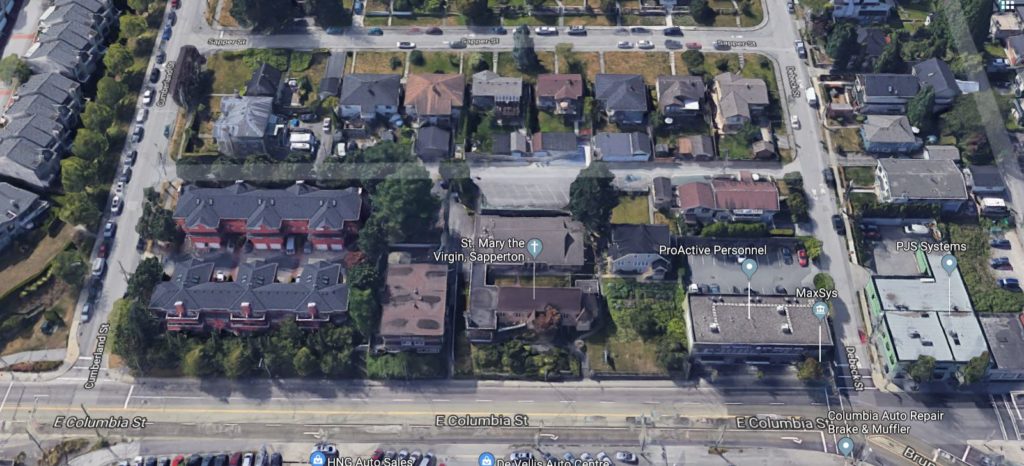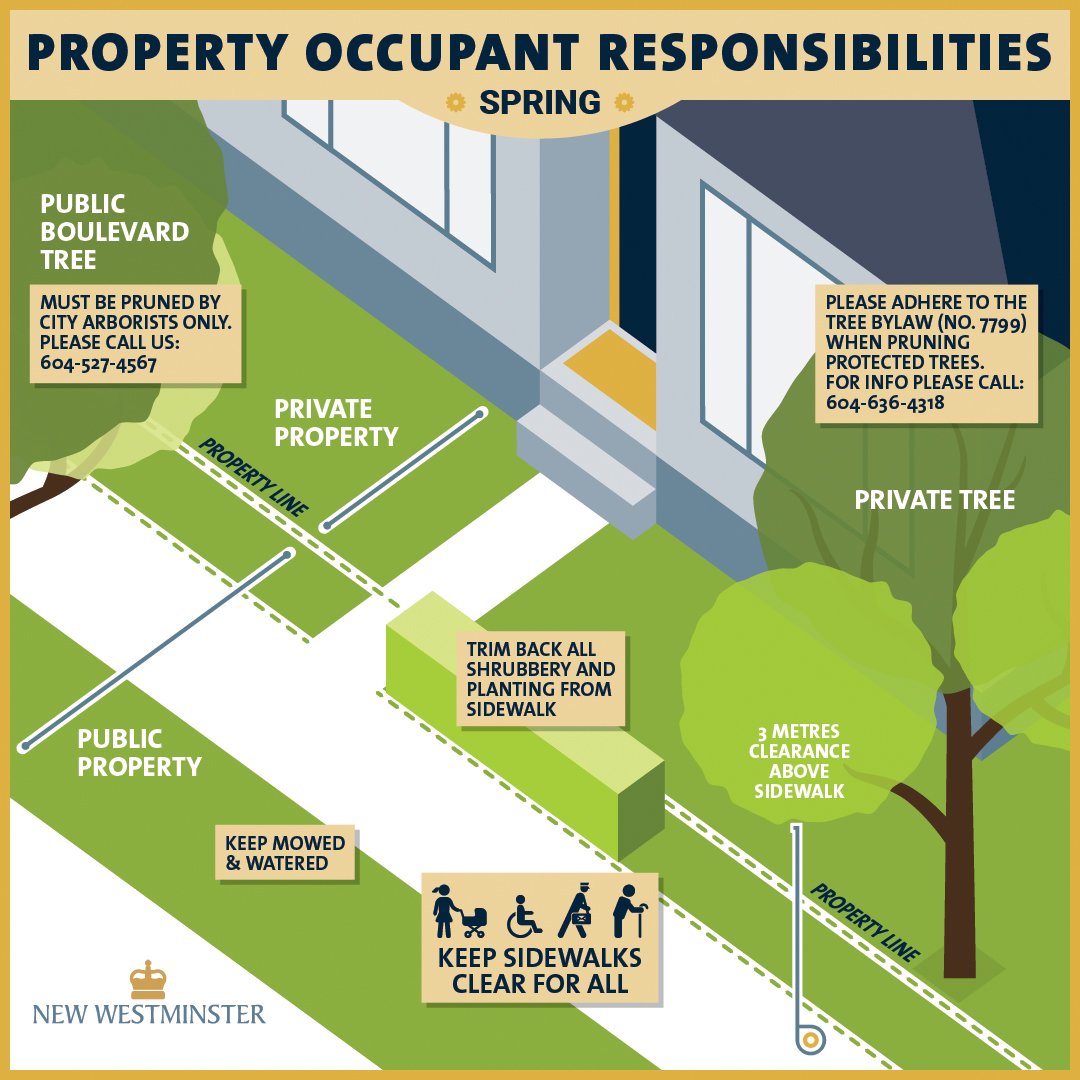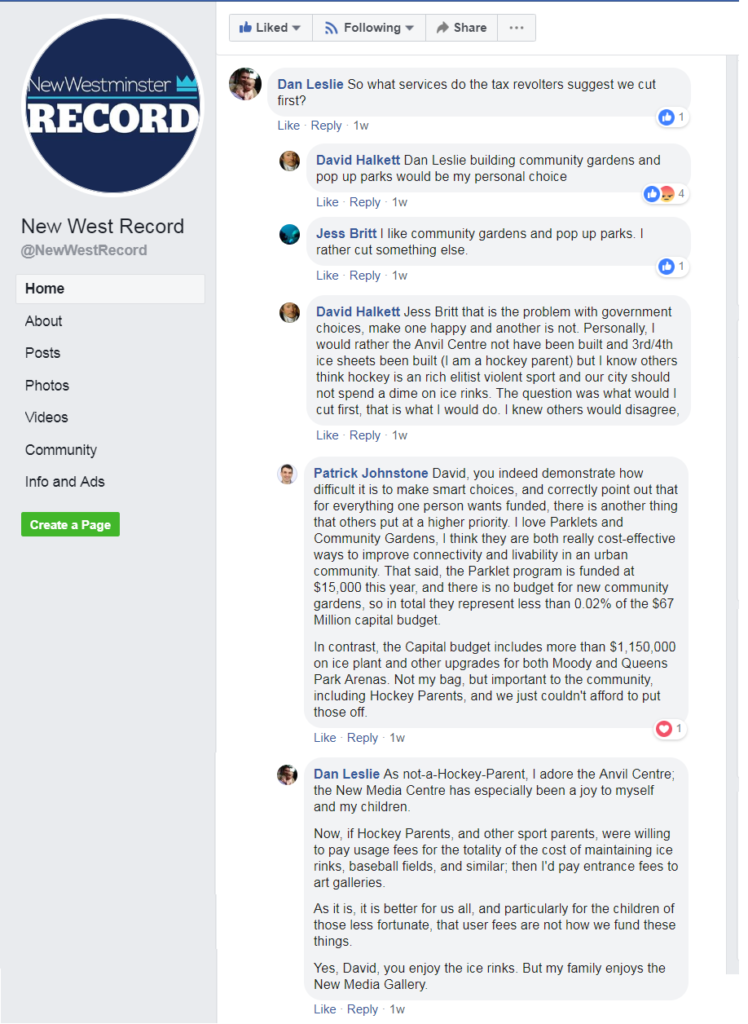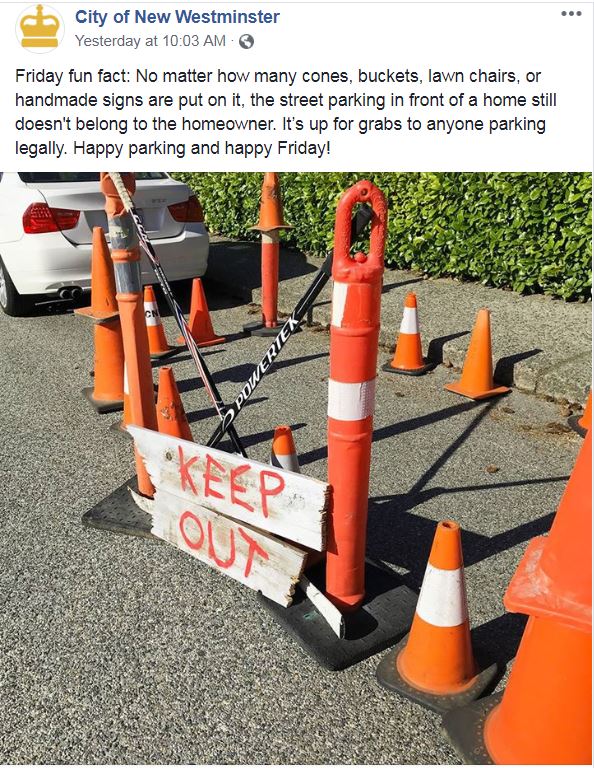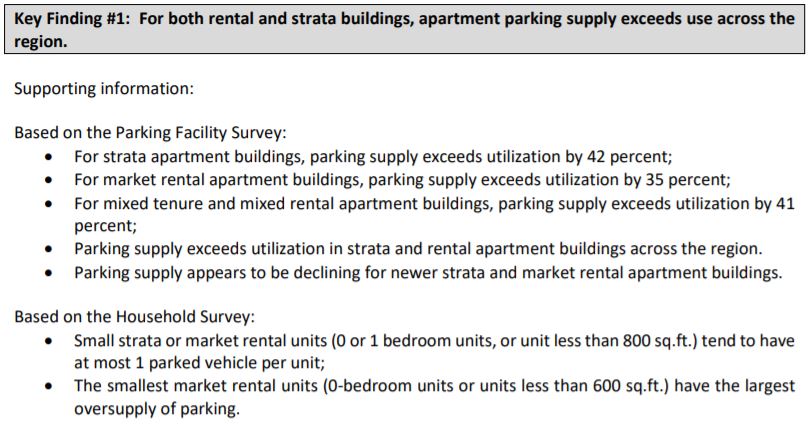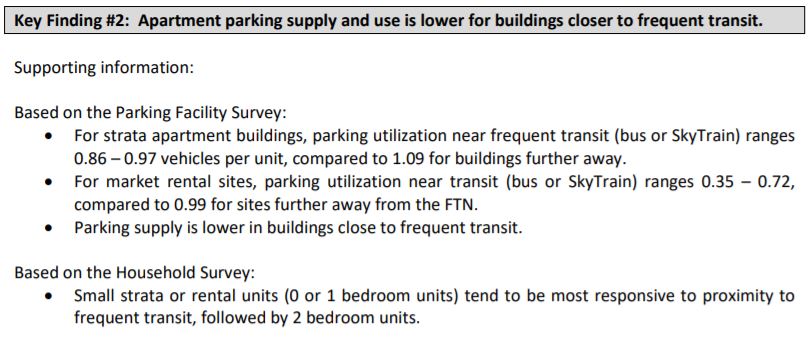This is not strictly an “Ask Pat”, but an e-mail I received from a resident. As the conversation was timely and I wanted to take the time to write a complete response, I asked the writer if I could copy the letter (with a little editing for space and to remove personal info) and answer on my Blog, and she agreed. So here goes:
Resident asked:
I would like to add my voice to the chorus of those New Westminster residents who are dismayed and, frankly, a little incredulous, that the recycling depot is being removed from our community. At a time when it seems the entire world is bending over backwards to reverse the damage of our disposable society, New Westminster is going in the opposite direction by making it harder for residents to do the right thing.
If one of the main motivators behind the decision was to save money, I suspect we are going to spend as much as we were going to save to appease the significant number of concerned (read “outraged” from much of what I’ve been reading and hearing) citizens. Council made a mistake by not having a proper consultation with residents about this. (And we know that the process was lacking simply by the number of us who were surprised by the move.) It seems as if burying the removal of a well-used community service in the construction activities of another much needed community amenity was purposeful. If not, it suggests that our respected Mayor and Council are really less dialed into the community than they care to think.
As reasonable as you thought the move and as short-sighted and backward as it seems to many of the rest of us, I do understand that we are stuck with it. In the interest of being more positive than negative (which may not seem to the case at this point in my missive), I would like to offer some constructive suggestions to get us back on track saving the earth. I understand from latest reports we only have 18 months, so I suggest we get cracking:
- Some of us with big yards cart up to 25 (!!) bags of leaves and miscellaneous crap that drop from the mature trees/yards. The quick jaunt to the depot will be no more, so how about unlimited pickup of yard / compost waste bags from September 1 to December 31.
- Start picking up glass, styrofoam, and plastic wrap in our blue bins (or another TBD bin). This is an obvious one. The condo I used to live in at least took glass, not sure why this is not possible in QP.
- Dedicated ongoing mini-stations (partner with existing NW businesses?) for batteries, cardboard, lights, paint, etc. This seems to work well with the Salvation Army and electronics but because of the increased density down at the water front, this is becoming a more difficult drop point.
There are a ton of smart, thoughtful people in New Westminster who will have more and better ideas than these. I have no doubt that the best solutions will come from residents. At this point, any attempts to placate an engaged and rather intelligent audience with platitudes about the “5 minute drive” to the new station may fall on deaf and already inflamed ears.
I would be delighted to learn how Mayor and Council are planning to develop solutions and would of course be prepared to contribute to the process.
Unfortunately, you are probably right that we have not effectively communicated the situation with the recycling centre. Of course, we also haven’t made any changes yet. We have, however, committed to long-term partnerships with adjacent communities to share some recycling costs a year down the road (as I talked about in this Council report) so the process of reviewing how we provide recycling services is ongoing. This is recognizing the space problem on the current CGP site, but we cannot ignore the other issues impacting our regional EPR systems.
Every time we make any change in the City, we are met with a loud chorus of calls to maintain the status quo, usually with little acknowledgement of the pressures behind the changes. And to that point, you are right, we should have done a better job communicating those challenges.
I take a bit of umbrage at the idea that Council has tried to bury this or hide the reality of the challenges in regards to recycling and space on the CGP site. We are still trying to understand what changes we need to make, and how we can support a system that works as well as possible for all users in our City. The idea that we are sitting in a back room trying to find the most devious way to undermine the environmental efforts of our own residents plays well in the barber shop or on a politically-motivated on-line petition, but is ridiculous on the face of it.
The location of the current recycling centre is problematic. We are committed to building a new 114,000+ square foot aquatic centre and recreation facility adjacent to the current Canada Games Pool. We have also committed to keeping the current pool and Centennial Community Centre operating and programmed during construction. That means that it will be a 2- or 3-year period where much of the existing parking for the CGP, CCC, and the Royal City Curling Club (which also hosts gymnastics programming and roller derby in the summer) will be covered by construction and construction staging. To keep these major community destinations operating during construction means impacts on the all-weather field, the current recycling centre, and even how Fire Rescue uses their space. As we move forward on construction planning, these compromises are still being worked out, but suffice to say space will be very much at demand on the site. The road accessing the current recycling yard will most certainly NOT be accessible for much of that period, as accessing it would require driving through an active construction site. This means status quo is not viable, so we need to look at what our other options are.
I want to address your suggestions, While recognizing that our recycling system (in New West, in BC, and across North America) has a bunch of inherent complications that are not clear to the general public. This is likely because successive governments have made (in my mind, misguided) efforts to make recycling as seamless and simple for the waste-generating public as tossing trash in the garbage was. This is based on a perverse idea that for North American consumers to “do the right thing”, it must be as easy as doing “the wrong thing”, and preferably cheaper. Unfortunately, responsibly managing our waste streams is neither cheap nor easy, and if we try to make it so, the responsible part inevitably goes away.
To modify an old adage: Cheap, Easy, or Environmentally Friendly. For waste management, you can pick any two.
So to the suggestions:
1: The removal of green waste from our garbage stream was and still is a good thing. The City supports it by allowing you to place paper yard waste bags (up to 50lbs per bag), next to your green bin for collection. This comes at a significant cost for the City (hassle + staffing + >$100/Tonne in disposal fees), but this is offset a bit in reduced cost compared to that green material going into the garbage. We are spending a bit more to do the environmentally friendly thing here and make it easier for residents who are fortunate enough to have a big yard. We are already doing what you are suggesting.
2: We can’t put glass, Styrofoam, and plastic bags in our blue bins. Simply, there are no services available in the Lower Mainland to separate those wastes at the MURF (“MUlti Re-use Facility”), and no market for the recycled materials that result. Your old condo may have had a separate glass receptacle, it may have had an older “Dirty MRF” contract that took glass, but dollars to donuts that contract no longer exists, or they may simply been taking the mixed waste to the landfill/incinerator. There are, however, several places in the City and nearby (see below) where you can take Styrofoam or soft plastic, though these services are becoming strained as the market for the recycled material is shifting.
Some Cities (e.g. Vancouver and Burnaby) still take glass in separate curb-side bins. When New Westminster decided in 2011 to move towards comingled collection of recyclables I spoke out against it, because it was my opinion that we were sacrificing the longer-term more environmentally-friendly approach for the cheaper and easier in the short term ones. It is possible that I was under-informed at the time and that the change made perfect sense with where it looked like recycling was going in 2011. There is no doubt we saved a bunch of money in the last decade. But now we need to work within the limits created by that decision. I am almost certain that no-one in the City wants to spend the money to go back to curbside separation, just to make it easier to manage the glass waste stream.
This speaks to something else I think we need to have better discussions about: recycling glass jars may not “the right thing” when it comes to recycling. Glass is inert (i.e. it does no harm environmentally when landfilled) and it’s value as a raw material is very limited outside of a few very niche product streams that are of questionable economic value and likely result in equal or more energy and resource use once full life cycle costs are considered. As we have a necessarily limited budget to manage waste streams, there may be better cost-benefit approaches as far as the environment goes than subsidizing the use of glass peanut butter jars. But I’m headed down a rabbit hole here, so let’s get back on track.
3: There are drop-off points around the City for these things, and many of them are indeed part of local businesses. London Drugs takes batteries. Save-on-Foods takes plastic bags, Rona takes paint, the EnCorp Return-it businesses take a variety of wastes that can’t go in your recycling bin. There is even a Metro Vancouver tool to map out where you can take any material if you want to recycle it (and there is an App for that, natch). Enter you city and your material, and out pops a map like this: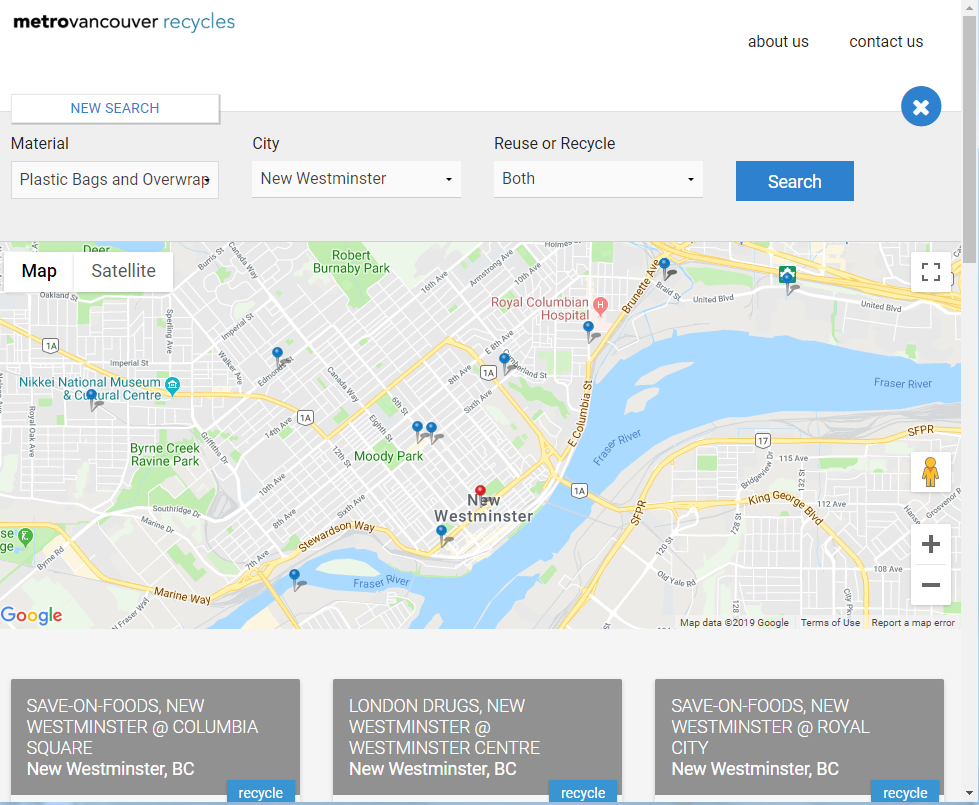
For plastic bags there are a lot of places, for Coffee Pods there are only a few (because coffee pods are evil and the environment got screwed the moment you bought them). The larger point, however, is that there is no single recycling stream, there are many. Even the current City recycling depot takes many things but not everything, and the replacement depot we will share with the Tri-Cities will take a wider variety of things than the current depot. In one sense, it will be easier because more things can go to the one spot. In another sense, it will be less easy, because it is further away for many people who are accustomed to using the current facility. Some of them may make the extra trip, some may decide to use another facility closer to them, depending on what they are trying to dispose of. Your example of the Sally Anne and electronics demonstrate that people have different motivations for using different spots (should these locations be near densified communities to allow non-auto-dependent drop off, or away from them because traffic in dense areas make drop off harder?)
Every recycling stream has its own inherent complications. Collecting plastic seems like the quick win, but it is really complex. There are varieties of plastics, and introduction of the wrong type of plastic (or a metal film attached to a plastic, or a shard of broken glass) into a stream can pollute it and remove most or all value that might be attained from recycling. Never mind when people inadvertently or ignorantly toss a little bit of organics or (gross) biohazard like a diaper or dog waste into the mix – often this means the entire load needs to go to the landfill. Because of this, the wholesalers of the recycleables will pay the city a little bit for some recycle materials, in the order of $100/tonne for most plastics, if there is a staff person attending the collection and assuring the load is “clean”. Without that attendant, we would likely need to pay $100 to have someone take that same tonne of material. And the material is as likely to be “recycled” into fuel for the local concrete plant as to be made into new consumer items. I don’t think that is the kind of recycling that most people would consider a good thing.
I guess a lot of this is addressing your final point, fully recognizing that some of my writing here may come across as dismissive or defeatist. I have been working in sustainability, rabble-rousing about trash, and wailing on-line about recycling for more than decade (I have been known to tour waste recycling facilities on my vacation even before I was elected to Local Government!), and I am still only beginning to learn the complications inherent in these systems. Meanwhile, the ground below our feet is shifting all the time. I can almost guarantee you Mayor and Council are not going to come up with some clever idea to make our waste stream easier, cheaper and more environmentally friendly. Yes, New Westminster is full of smart, engaged people, but there are teams of engineers and planners in local governments, Metro Vancouver, RecyclingBC, and similar organizations across the continent working to address these complex issues. There are professional people whose entire careers are based on this work. I put my confidence in them to come up with solutions.
That said, the role of Mayor and Council is to help communicate these potential solutions, and to hear from our residents and businesses what kind of solutions they would like to see applied. We also need to sometimes explain why we won’t apply them if they ultimately don’t meet our goals, no matter how sexy they look in that Facebook video. The hardest part of our job is to be clear about the cost/ease/sustainability compromises of all the solutions offered (as translated to us by actual subject matter experts) so that the public can let us know if the balance we strike is the right one. I think we will find a way to help people get more of their waste into recycling, but it will definitely be looking different in the decade ahead than it does now.
Unfortunately, the compromises to be considered cannot be summarized in even this stretching-to-2,000 word essay, never mind a simple on-line petition. There are no simple answers, but we need to continue to work on addressing our waste stream, and to start having more serious conversations about the upstream management of materials before they enter our waste stream. We had it pretty good thing going for the last decade: organics recycling came on stream, and people across Asia were happy to take our mixed plastics and papers and electronic waste. We managed to keep the cost of waste management in the City down relative to other costs, in part because of these things. It is clear those good times are coming to an end, and costs are going to be going up because of regional and global socio-economic trends. I guess the bright light in the current inevitable move of the recycling centre – this shift of the status quo – is an opportunity to open this discussion about what the next phase is in managing our waste.
